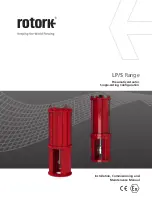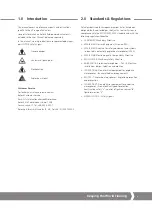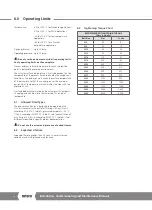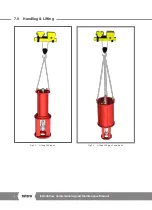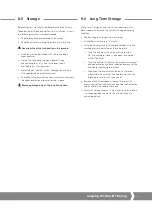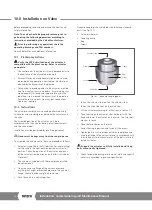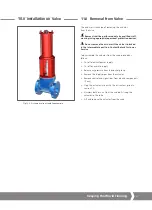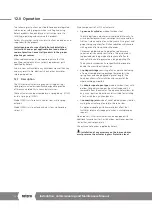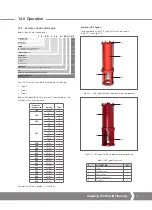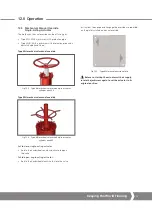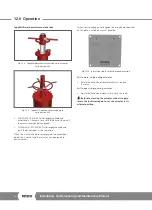
6
Installation, Commissioning and Maintenance Manual
6.0 Operating Limits
Temperature:
-30 to +100 °C for standard applications
-20 to +100 °C for PED applications
-40 to +100 °C for low temperature
application
-60 to +100 °C for ultra-low
temperature application
Design pressure:
up to 12 barg
Operating pressure:
up to 12 barg
Do not use the equipment outside its operating limits.
Verify operating limits on the nameplate.
Prevent external surface temperature to reach the ignition
point in potentially explosive environments.
The actuator surface temperature is strictly dependent on the
temperature of the process fluid used and by the irradiation’s
conditions. The end-user must check the surface temperature
of the assembly, so that this cannot go over the minimum
gas ignition’s temperature, which classifies the area with the
explosion’s risk.
Dust and debris accumulated on the actuator will slow down
its cooling and contribute to the increase of its external
temperature.
6.1 Allowed Fluid Types
The pneumatic actuator is designed to be operated with
Gas, Instrument air with particles filtering ≤ 40 µm (Class 7
according ISO 8573-1, table 1), pressure dew point ≤ -20 °C
(Class 3 according ISO 8573-1, table 2), total concentration of
oil ≤ 5 mg/m3 (Class 4, according ISO 8573-1, table 3); if not
differently specified in specific project documentation.
Do not use the actuator in presence of naked flames.
6.2 Expected Lifetime
Expected lifetime greater than 25 years, in normal service
conditions and with planned maintenance.
6.3 Tightening Torque Chart
RECOMMENDED TIGHTENING TORQUE
(Class 8.8 bolts)
Bolt Size
Nm
Ft. Lbs
M6
8.5
6
M8
20
15
M10
40
30
M12
55
40
M14
110
81
M16
220
162
M20
430
317
M22
425
313
M24
585
431
M27
785
579
M30
1250
921
M33
1400
1030
M36
1750
1290
M48
5000
3688
M64
9200
6786
A4
US
US
A4
US
A4
US
A4
Summary of Contents for LP/S Series
Page 89: ...Keeping the World Flowing 89...

